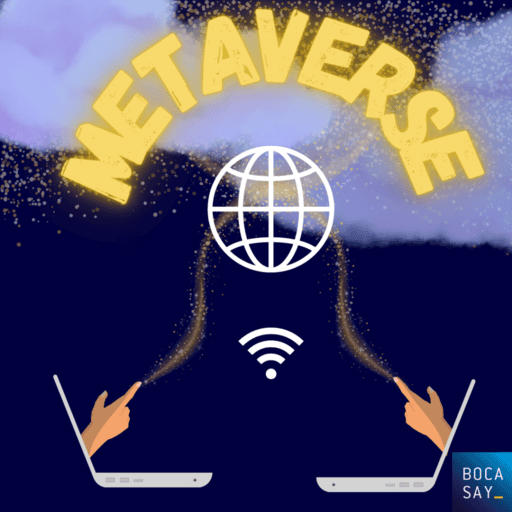How the Metaverse Will Revolutionize UX/UI Design
The gradual emergence of the Metaverse is a sign that we are fast heading towards another evolutionary shift in our relationship with digital technology, and that we will soon need to reimagine the way we think about digital design.
With more than 160 tech giants currently working on creating the Metaverse, how will designers bring this vision to life? In this article, we’ll explore how the Metaverse will transform the digital design practices of the future.
But first, let’s remind ourselves of the basics:
What is the Metaverse?
You can think of it as the Internet in 3D. Instead of connecting to the Internet, we’ll manage to ‘live’ inside it with virtual identities known as avatars. The Metaverse is often described as a parallel virtual world in which we’ll be able to work, learn, socialize, play, shop and own assets.
Most people had never even heard of the term Metaverse before October 2021, when Facebook’s Mark Zuckerberg officially rebranded the company as ‘Meta’, and basically publicized the company’s commitment to the creation of the Metaverse as soon as possible.
This emerging and all-encompassing digital ecosystem has already attracted major global investment and promises to completely reshape what it will mean to be ‘online’ in the future. Digital designers will perhaps play the most crucial role in creating a Metaverse accessible to all.

What is UX/UI?
UX stands for User Experience and refers to the overall experience a user encounters when interacting with the online services and products of a company or brand. UX designers are more focused on creating brand or company experiences rather than appearances. They also care about the looks, but their main concern is how the brand operates.
UI is short for User Interface and refers to the way a website or online brand looks – its graphical interface, buttons, colors, menus, sliders and all the components which make up the look and feel of an online brand. UI designers are responsible for creating visually-attractive and stimulating digital spaces.
🌏 Do you have a business IT development project? You’re in the right place. We specialise in software, web and mobile development as an offshore outsourcing company. 🌏
What kind of design will be needed for the Metaverse?
Ethical Design
We all hope that the Metaverse will eventually be a digital environment where we can reach our full potential, and that those designing it will consider the users’ well-being as a top priority.
For example, consider how people fighting within a virtual world, or someone getting bullied, will probably be a more hurtful and visceral experience than what we are currently used to.
Within the Metaverse, design decisions have never been more important. Managing toxicity, limiting bad behavior and bullying will probably be a top consideration for Metaverse designers.
Designers have to create multiple interconnected 3D environments that will interoperate and communicate with each other to enable people to work, socialize and play fairly and securely.
Only time will tell if the Metaverse will eventually turn out to be a digital utopia of thriving businesses and social interaction, or whether it will be a toxic and unsafe digital nightmare.
3D Design
We will no longer just ‘see’ the Internet on computer monitors, but rather experience it through virtual reality (VR) headsets that allow us to navigate 3D spaces like shops and corporate offices.
Designing for the Metaverse will first of all require a transition from 2D sketching practices towards 3D modeling tools that will be able to create immersive virtual spaces and experiences.
Platforms like Gravity Sketch and Tvori offer educational and collaborative resources for digital designers that want to prepare for the Metaverse by learning the fundamentals of 3D design.
It’s almost inevitable that the Internet user will evolve into a Metaverse avatar, and this is when being online will involve interaction as a 3D active participant in an immersive virtual network.
Forget the two dimensions, good design in the Metaverse will have to be much more than easy-to-use, aesthetically pleasing and intuitive – it will have to be in 360 and wholly immersive.
👨💻 Does your online business need to prepare for Metaverse? At Bocasay, specialized in offshore outsourcing company, we provide smart IT solutions to leading companies around the world. Please contact us to find out how we can help you with your next project.

Designing Stories
Storytelling has always been essential to good design. From architecture, graphics, computer games, products, brands and services – good stories enable us to connect with grand designs.
If you think of the Metaverse as an endless web of experiences, designers will have to visualize stories in order to find meaningful and efficient ways to connect all those experiences together.
What if you could buy scuba diving gear in an online shop that is ‘underwater’, located in a virtual ocean of the Metaverse? Websites and their 2D limits could soon become obsolete.
Imagine walking into the virtual shop of your favorite brand, only to be welcomed by the CEO’s avatar, who already knows your name, can answer all your questions and give you special offers.
With endless design possibilities offered by a 3D virtual space, there is no doubt that immersive storytelling – usually essential in video games – will be at the forefront of Metaverse design.
Observational Design
Whether it’s a product or a website, good design always requires good observational skills. That’s because a designer needs to know how, when and where the final product will be used.
In this new immersive world of the Metaverse, designers will need to focus on field research in order to understand how product usability will be impacted by the user’s actual physical space.
Since users will experience the Metaverse through VR headsets from real physical locations, designers need to be aware of how their products will behave in different physical surroundings.
The challenge for Metaverse designers is not so much how quickly a user can accomplish a goal, but rather whether the designed experience is immersive enough to encourage goal pursuits.
It’s been at least 20 years since computers and digital devices became integral parts of our everyday lives. The Metaverse will ultimately turn computers into portals for new virtual worlds.